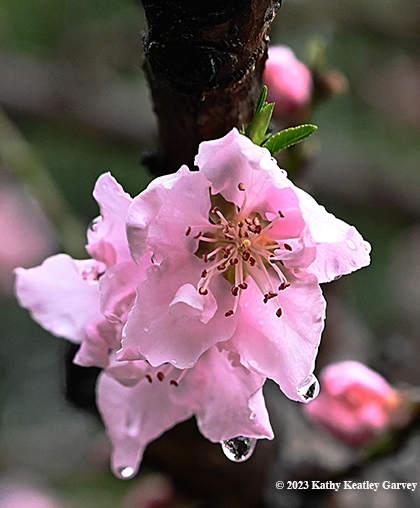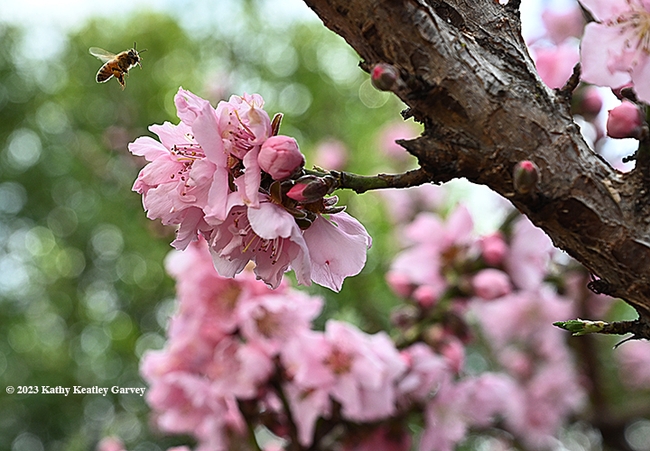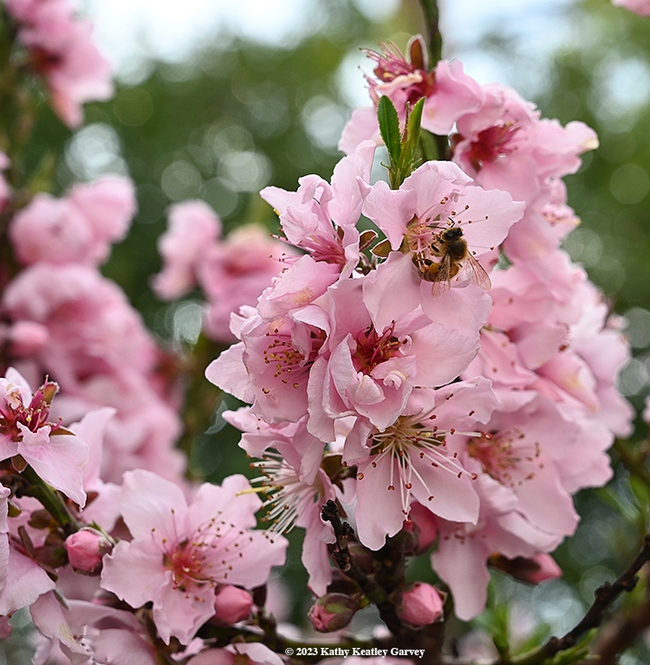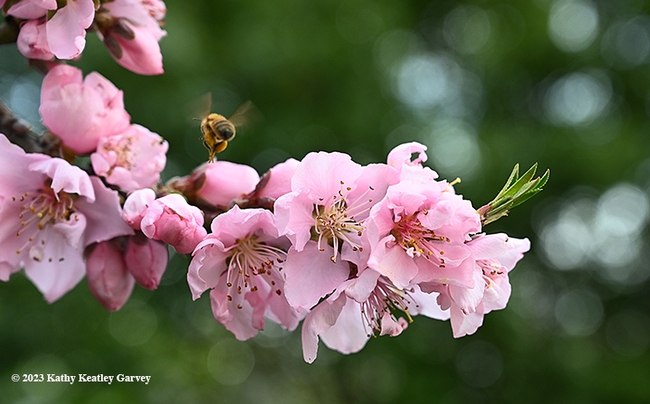
Well, they're huddled inside their colonies as California storms erupt with a vengeance reserved for politics.
The bees venture out...one here...one there...on sun breaks, but never is the nectarine tree a'buzzing as it did last year.
"So far things could be worse," UC Davis butterfly guru Art Shapiro distinguished professor of evolution and ecology, wrote in a group email (his "posse") on March 13. "Unfortunately, there appears to be no break through the end of the month, with never more than two consecutive dry days in the entire stretch and temperatures remaining well below normal. I don't think it's an 1861-62 scenario...yet...glub.."
Shapiro, who has monitored the butterfly populations of central California for 50 years and maintains a research website, Art's Butterfly World, tracks both butterflies AND temperatures--past, present and future.
On a scale not seen since 1861-62? That references the Great Flood of 1862, "the largest flood in the recorded history of Oregon, Nevada, and California, occurring from December 1861 to January 1862," according to Wikipedia.
Wikipedia says "it was preceded by weeks of continuous rains and snows in the very high elevations that began in Oregon in November 1861 and continued into January 1862. This was followed by a record amount of rain from January 9–12, and contributed to a flood that extended from the Columbia River southward in western Oregon, and through California to San Diego, and extended as far inland as Idaho in the Washington Territory, Nevada and Utah in the Utah Territory, and Arizona in the western New Mexico Territory. The event dumped an equivalent of 10 feet (3.0 m) of water in California, in the form of rain and snow, over a period of 43 days. Immense snowfalls in the mountains of far western North America caused more flooding in Idaho, Arizona, New Mexico, as well as in Baja California and Sonora, Mexico the following spring and summer, as the snow melted."
Indeed, Shaprio could hold a second job as a meteorologist, but he says this: "As you know, I adhere to the 'weatherman's philosophy,' i.e. predict the worst because if it doesn't happen people will feel relieved, whereas if you didn't predict it and it happens people will want to kill you. May it not happen--any of it."
Meanwhile, we welcomed another sun break yesterday. So did the nectarine tree and the honey bees.
Attached Images:

A honey bee, cooped up in a hive for weeks due to the rain and cold, heads for a nectarine blossom in Vacaville, Calif. (Photo by Kathy Keatley Garvey)

Find the bee! There's one pollinating a nectarine blossom. (Photo by Kathy Keatley Garvey)

A pollen-packing bee exits a nectarine blossom.(Photo by Kathy Keatley Garvey)